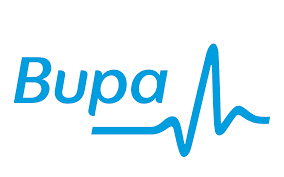By Daniel Stott (Registered Osteopath)

Technology is slowly but surely taking over, creating more sedentary jobs and requiring long hours to be spent in front of a computer. Since the fifties sedentary work has increased by a staggering 83% with an estimated 4 out of 5 jobs in the UK now being desk-based. Sitting down all day is becoming harder to avoid and unfortunately it comes at a price.
Studies coming out of Loughborough, Leicester and more recently Wisconsin university have drawn alarming conclusions about the harmful consequences of routine prolonged sitting. They contain strong suggestions that sitting for just 6 hours a day can increase the probability of developing diabetes, cardiovascular disease and even increases the chances of death from any cause. Amongst the worrying conditions back pain earns its place as one of the more common and annoying effects of prolonged sitting. Most have learnt to endure the aches and pains that linger during a long day but what exactly does sitting down do to the lower back?
The Discs
The human body simply was not designed to sit for prolonged periods of time. When sitting the distribution of body weight is unfavourable on the lower two lumbar discs; the compression through these discs restricts the flow of blood and nutrients. Discs will temporarily lose height but recover when the compression is reduced, however over time this can lead to irreversible degeneration. If the disc loses too much height and integrity the exiting nerves may become pinched causing sciatica.
The Pelvis
Stabilisation of the lower back and pelvis is achieved through force closure, a biomechanical process which relies heavily on the pelvic ligaments. When seated the sacrum tilts backwards (counternutation) stretching a number of ligaments. Continuous stretching of these ligaments will cause tissue creep meaning the ligaments will not return to their previous length. The body will then compensate for the instability by tightening all the muscles crossing the pelvic joints (sacroiliac joints) causing pain and stiffness.
The Hips
Sitting down puts the hips into a constant state of flexion; muscles that flex the hip will then adjust to this shorter length. Psoas and iliacus (the primary hip flexors) are two muscles hidden deep in the abdomen that are most commonly affected. Psoas attaches directly onto the vertebrae and discs in the lower back (lumbar spine); when shortened standing up will cause the muscle to compress these structures. Iliacus attaches onto the inside surface of the pelvis, any tension through this muscle can lead to an unbalanced or twisted pelvis.
Recommendations
Identify
Almost everyone at some stage has become a Google doctor and attempted to self-diagnose. In an ideal world it would be wise to seek a medical diagnosis from a healthcare practitioner such as an osteopath, chiropractor or physiotherapist, however this isn’t always possible. Location of the pain and what aggravates it are the best indications of what is going on.
Disc compression will generally affect the central lower back which can refer up into the mid back or into the legs if the nerves are being pinched. Bending forward will be challenging and putting shoes and socks on will be almost impossible because this will significantly increase the pressure within the disc. Coughing, sneezing and bearing down may also cause pain.
Pelvic dysfunction will generally affect one side of the lower back/ top of the buttock and can refer into the groin. Turning over in bed and going from sitting to standing will cause some degree of discomfort; walking may also be difficult.
Sciatica is a diagnosis used to describe irritation of the sciatic nerve with pain exclusive to the back of the thigh, calf and sole of the foot. Since it directly affects the nerve it is usually accompanied with neurological symptoms such as weakness, numbness and tingling in the affected areas. Pain is made worse with flexion of the hip which stretches the sciatic nerve.
Exercise
Encouraging a strong flow of blood and nutrients to the area can help ease any suspected disc compression or muscular stiffness in the central lower back. Knee hugs can stretch tight muscles with minimal pressure through the discs, start by laying on the back and hugging both knees up to the chest causing the buttocks to lift from the floor. Follow on from this with trunk rotations by laying on the back and bringing the hips to a 90° angle. In this position swing the hips from side to side in a slow and controlled way to encourage a subtle twist through the mid and lower back. Spend 2 minutes on each of these exercises at least once a day.

Opening the sacroiliac joint can help to correct any suspected pelvic dysfunction or one sided buttock pain. Piriformis stretch rotates the hip inwards by stretching the external rotators in the buttock, begin by laying on the back and bending the non-affected leg up then take the affected leg and cross it over the non-affected leg. In this position thread one arm through the centre of the legs and one around the outside grabbing the non-affected leg in the process. By pulling the non-affected leg towards the head the stretch should be felt in the affected buttock/ hip; hold this stretch for 2 minutes.

Relieving the symptoms of sciatica entirely depends on where the sciatic nerve is becoming irritated. There are two common sites where this irritation occurs; one is the lower back (lumbar spine) often as a result of a disc bulging onto the nerve root. The other site is in the buttock underneath the piriformis muscle which pinches the nerve when it is tight. Knee hugs, trunk rotations and piriformis stretch can all work so attempt all of them to find which one relieves the symptoms best.

Prevent
The secret to maintaining a healthy back is prevention. Recently standing desks are gaining popularity amongst employers, and with good reason. Not only does standing active the core muscles but it also helps to distribute body weight evenly between the discs and spinal joints. Research strongly recommends getting up every hour to boost blood flow and metabolism, so set an hourly alarm and take regular breaks from the desk. Another option is to swap the office chair for a Swiss ball. Sitting on a ball requires a significant amount of balance which is achieved by engaging the core muscles; this will help to support the discs and pelvis. Health and safety regulations may prohibit Swiss balls at work but be sure to invest in one for working from home.
Summary
Prolonged sitting…
Compresses the lower two lumbar discs.
Stresses the pelvic joints.
Tightens the hip flexors.
Irritates the sciatic nerve (sciatica).
Counteract these harmful effects with knee-hugs, trunk rotations and piriformis stretch. Prevent by switching to a standing desk, swapping the chair for a Swiss ball and taking regular hourly breaks from the desk.





